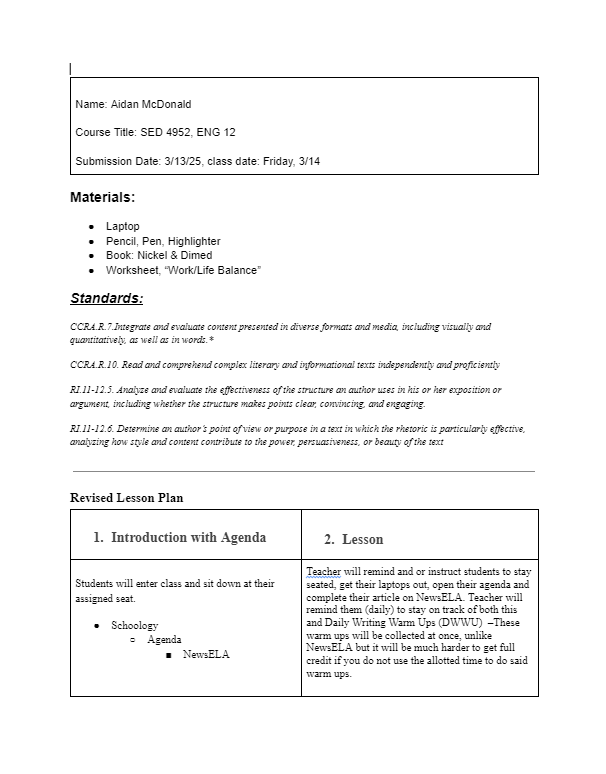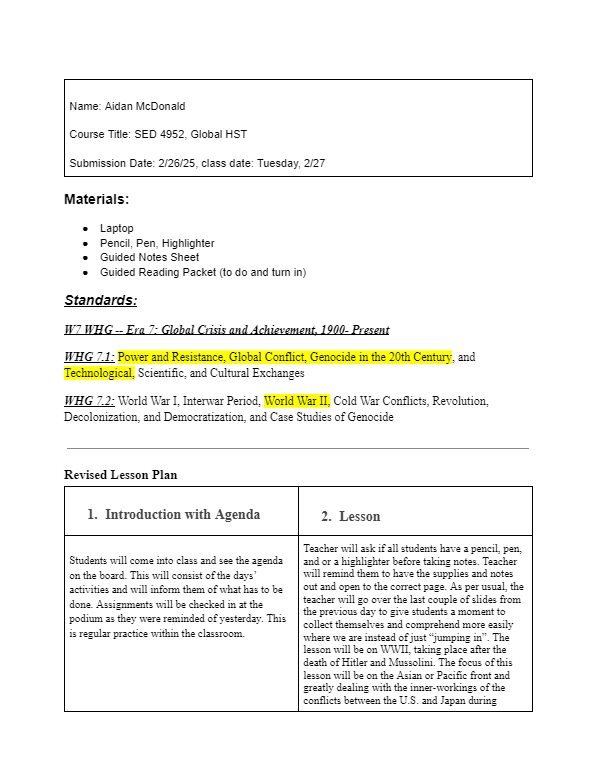Appraising, Choosing, and Modifying Tasks and Texts for a Specific Learning Goal (TTLG)
Choosing and modifying tasks and texts to meet a specific learning goal is the single most used core teaching practice out of any of them. All teachers have done this for every single unit that they have taught. What it entails is researching, finding, and or creating assignments or procuring texts that you will use to help the students understand the standards and goals of the lesson.
Appraising Tasks and Texts:
Appraising a task or text simply means evaluating whether or not it is relevant to your class and unit and whether or not it would be beneficial to the students in receiving said material to help them reach the learning goals of the unit.
Some content can be very interesting or informational, but if it does not fit within the classroom restrictions as well as meet the grade level —it is not useful within your classroom!
This can be as simple as looking at a question you found for an exam online. It reads, “Where did Barbara get a Job at in the end of Chapter 1?”.
A.), B.), C.), or D.)
Sounds good, but you want it to be more fair and inclusive for students at all reading levels and at all abilities of recollecting the book. So you…
Other Examples:
Lesson Plans:
Modify (the) Task and Texts:
When finding a source such as a single question or entire assignment online to use in the classroom, sometimes you can use part but not all of it. This is when you modify the assignment, question, or idea that you found. It can be as simple as a single word or as drastic as taking ONLY a single word from the assignment and changing everything else!
As previously stated in the multiple choice test question example, “Where did Barbara get a Job at the end of Chapter 1” there are some aspects of the question that may not be fair to some students.
With a quick modification, you can make the question NOT multiple choice (and multiple choice for any student who would need one (IEP/504)) and make it more open-ended so the students can demonstrate their true knowledge of the book. The modified question can read as,
“Where is one of the places that Barbara worked? Describe her experience there.”
This gives the students the ability to demonstrate their knowledge of the overall message and meaning of the book without confining them a single chapter and hoping that they remember in what chapter she got which job.
To the left is a part of a lesson plan that asked all students to write certain “regrets” of theirs on a piece of paper. This was not intended to be shared with anyone, matter of fact it was meant to be torn up! That being said, I still felt uncomfortable with the students possibly writing their “biggest” regrets on a piece of paper for any other student to possibly see. Due to this issue I changed the assignment entirely to revolve around the word, “redemption”. This way the class could come to a consensus or debate freely without worry of having to use their own personal experiences as we were able to come up with many actions that could or could not be redeemable based on the students’ opinions and meaning of the word.
Lesson plans in their entirety are appraising and modifying tasks, activities, or readings that will be used in the lesson. All lesson plans also go through multiple revision processes and will have changes made based on individual needs or general changes to the assignment or unit. All resources that are in the lesson plan have gone through the entire process of TTLG and have been shown to be beneficial to the students reaching the learning targets or goals. The books, videos, websites, programs, worksheets, and everything else within a lesson plan that the students have access to has been appropriately appraised and modified to fit the learning goals of the classroom.



